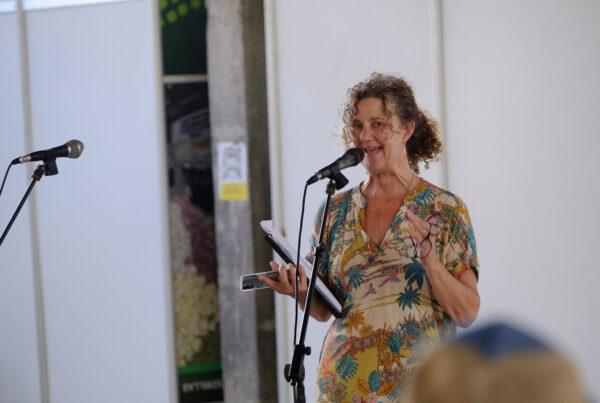There is no place like home. Except when your home is melting. The dark non-verbal comedy for children ‘Why Don’t They Care About Earth’ by director Petar Pejaković and Sarajevo Youth Theatre ensemble portrays five polar animals acting and looking like clowns escaping the North Pole in search for a paradise, or at least what they imagine as paradise, which is in reality a zoo.

When it comes to plays for children dealing with ecology, it is often seen that the play gets so didactic that it starts looking like a lecture given in a school. Or the authors try to patronise the audience by taking an authoritative attitude. ‘Why Don’t They Care About Earth’ successfully overcame that obstacle by turning a piece in which the main characters die from a climate catastrophe created by humans, into a comedy. And what was funny? First, they are clowns, they look and move like clowns, they address one another in a made-up language, they enjoy playing with garbage on stage, and they play music with the garbage. Everything that could, is exaggerated.
Another aspect of the play is that it visually portrays the consequences of pollution – animals are choking on shoelaces, they are caught in a plastic net, and their home is destroyed… On their journey, animals come across an oil spill in the sea, birds are made with plastic wings, acid rain falls from the skies, greenhouse gases and smog fills the air, and nuclear explosions. A couple of times they encounter humans. Sometimes it is people who photograph them for animal rights campaign, sometimes its hunters, but the most interesting meeting is the meta-encounter of a woman who is late for the play, yells in the audience, making phone calls. She enters the audience and asks them what is the title of the play, who are “they” in ‘Why Don’t They Care About Earth’, and why don’t we care.
The beautiful scene was right at the beginning when the animals found a plastic bag. It is their first contact with a human being. It reminded me of the film ‘The Gods Must Be Crazy’ (1980) by Jamie Uys. Just like in a film where a Coca-Cola bottle dropped from an aeroplane raises havoc among a peaceful tribe, in the performance, the plastic bag kicks off chaos and initiates the desire to wonder and see what is beyond the melted ice.

During the Q&A, the director and actors shared their experiences when the play was performed for a young audience. The most heartwarming story (but not so warm to melt the North Pole) was when at the end of a play, a child said: “We could not save these five animals. But we will save some others.” This shows that the play is communicating with the target group. And not only with young people. As the festival photographer said: “Usually when I work I can only concentrate on making the best photos possible and I am unfocused on the plot of the play. But this time, I was so smitten by the performance that I had to remind myself to take pictures.”

Divna Stojanov is a dramaturg and playwright. She also writes theatre reviews.





